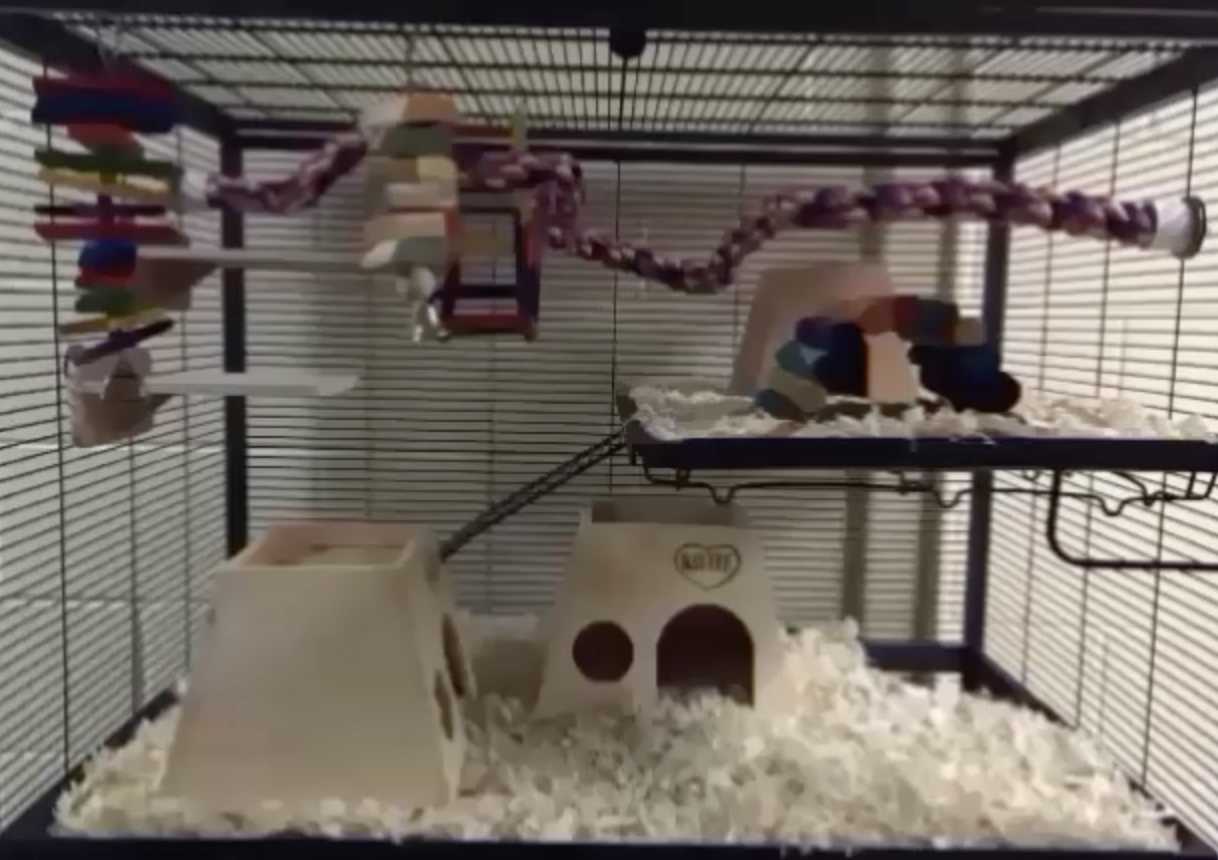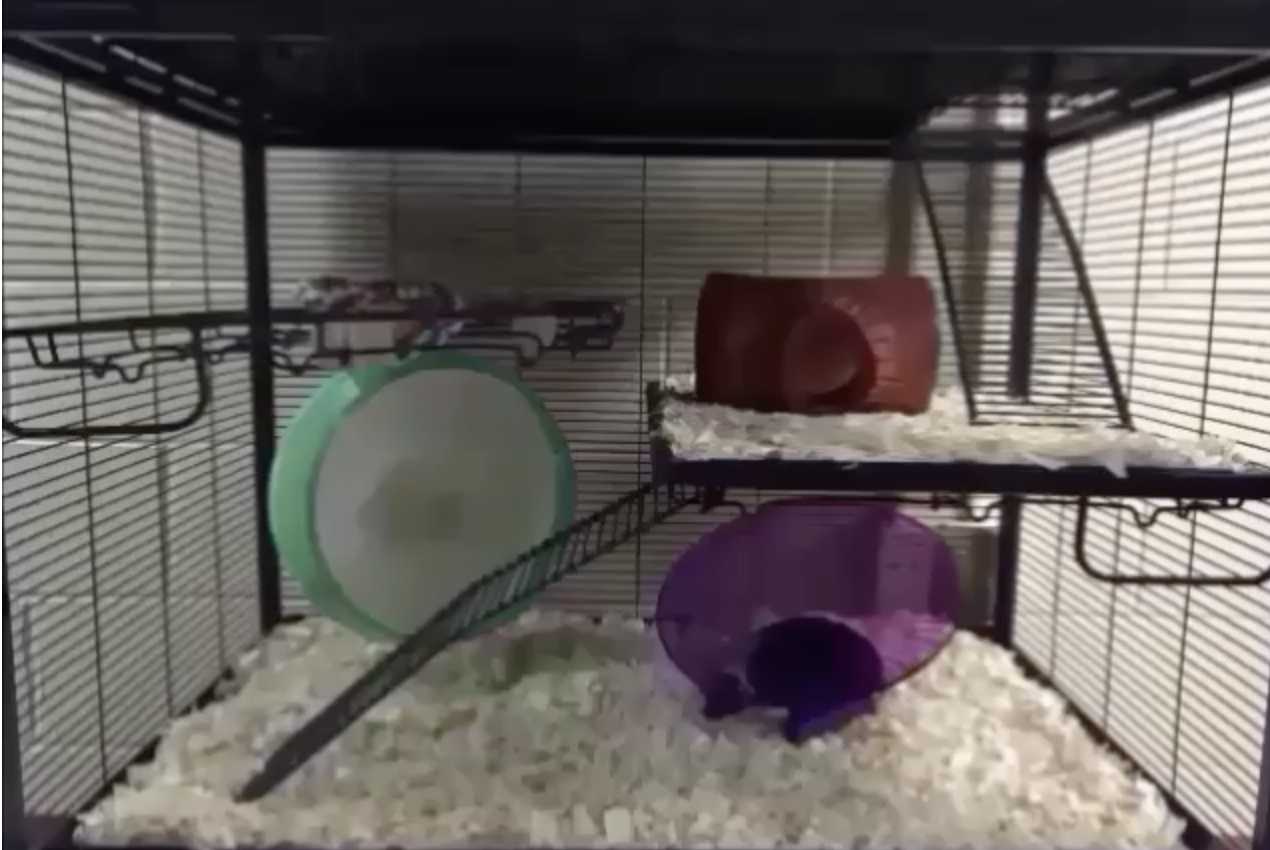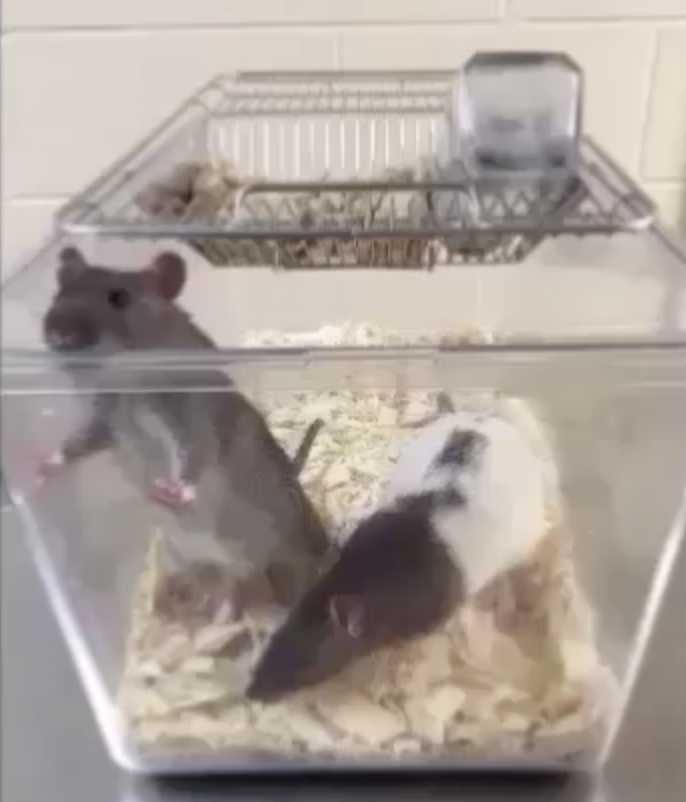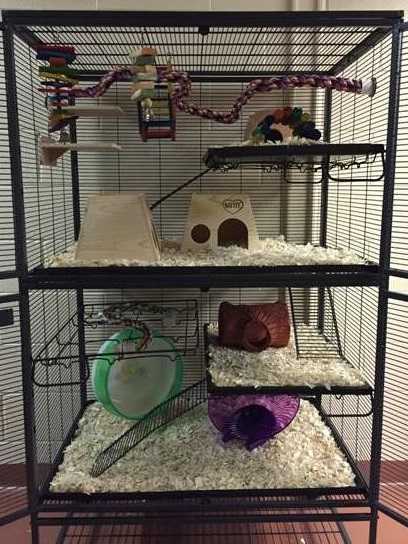Enriched Rat Housing
Oksana Polesskaya, Abraham Palmer, Gabriel J. J. Barrero, Keita Ishiwari, David Dietz, Jerry B Richards
Abstract
Description and benefits of post-weaning “Enriched Rat Housing” used in conjunction with various experiments
Steps
Standard housing
Cages are kept in a temperature (22 ± 1 °C) and humidity (55 %) controlled colony maintained on a reverse light/dark cycle (lights on from 1900 to 0700 h).
Animals have ad libitum access to food (Teklad Laboratory Diet #8604, Envigo, Indianapolis, IN) and water unless food or water restriction is required by experimental protocols.
The standard laboratory cage has a total volume of approximately 18,500 cm3 of cage space. When two rats are housed together, the space per rat is only 9,250 cm3.
The standard housing restricts the animal's physical movement. For example. when the lid is on, adult rats cannot rear to their maximum height.
There are no objects inside the cage that can provide rats with sensory and cognitive stimulation.
The animal's social interaction is limited to that with a single cage mate.
Enrichment housing
Approximately 15 plastic or wooden shelters and pet toys (e.g., huts, ladders, ropes, running wheels, bells, etc.; Doctors Forrest and Smith) are placed inside the cage, which allows animals to play, exercise, and explore.


After weaning, up to 16 rats are housed together in a single enrichment cage.
Enrichment cages are kept in a temperature (22 ± 1 °C) and humidity (55 %) controlled colony maintained on a reverse light/dark cycle (lights on from 1900 to 0700 h).
Animals have ad libitum access to food (Teklad Laboratory Diet #8604, Envigo, Indianapolis, IN) and water unless food or water restriction is required by experimental protocols.
The bedding is changed and the plastic trays and objects are cleaned once a week.
Benefits
Rearing rats in the enrichment cage has the following potential benefits.
The enrichment cage provides a total volume of 648,000 cm3 of cage space, which is 35 times as much as that provided by the standard plastic cage. When 16 rats are housed together, the space provided per rat is 40,500 cm3, which is 4.38 times as much as that provided by the standard cage. Thus, animals' physical movement is unrestricted, and they are allowed to move freely within the large multi-level cage.
Animals are allowed to have social interactions with a large number of conspecifics.
The objects and toys inside the cage provide rats with ample sensory and cognitive stimulation.
Certain toys such as running wheels also allow animals to have vigorous physical exercise.
Potential issues
Rearing rats in the enrichment cage has some potential problems.
There is less experimental control over environmental conditions.
Social interactions with a large number of cage mates can occasionally result in conflicts among rats, and the risk of aggression is increased. Although injuries due to aggression are rarely observed possibly because there is enough space for rats to retreat and express submissive behaviors, stress associated with such conflicts could potentially affect animals' behavior.
Large cage space and novel objects can be initially frightening and stressful for some animals.
Rats also sometimes compete for resources such as water. However, this competition often gives way to cooperative behavior.
Summary
(1) Standard housing provides a simple and controlled environment that restricts both physical movement, sensory and cognitive stimulation, and normal social interaction.
(2) Enriched housing provides a complex environment that provides ample opportunity for movement, sensory and cognitive stimulation, and social interaction.



